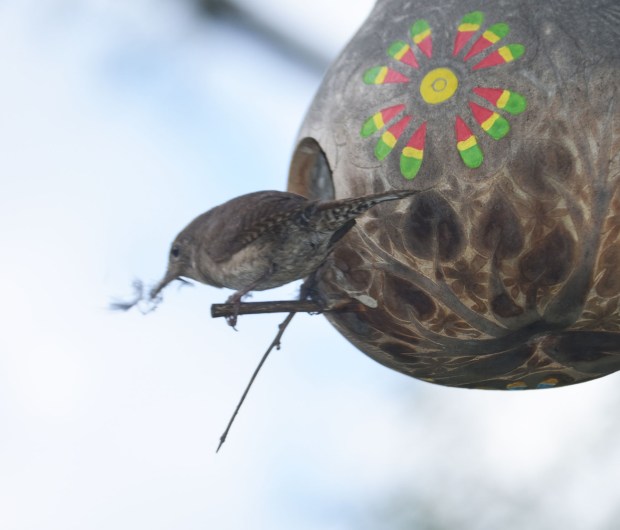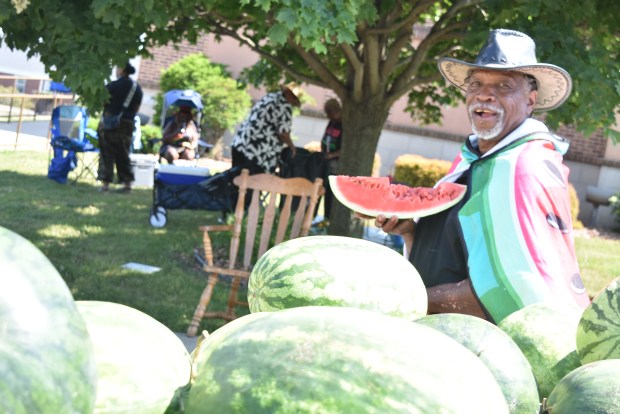For us, summer usually starts on Mother’s Day when our back-of-the-garage garden plot begins to take shape. Today we can see the first yellow flowers on our tomato plants and our peppers, zucchini and cucumber plants are all thriving in our back-of-the-garage garden plot.
So far, so good.
From our backyard, we hear the incessant buzzing of those red-eyed cicadas this spring, and we are told it is merely the incessant mating call of the males buzzing around from tree to tree in an effort to start another 13- or 17-year cycle.
From our same vantage point, we view the mating routine of the common house wren as it also makes a noise — a friendly three second chirp-chirp-chirp.
While the male cicada makes a noise as it whizzes from tree to tree, the male wren does the same thing by building nests for the female of the species.
Wrens are those small chirpy birds about 4-inches long and weighing little less than an ounce. As we do each year, we hang a painted gourd on a metal pole in our backyard in early spring, hoping that it would become a snug refuge for a pair of small house wrens wishing to make it their spring home.
Each mating season, the gourd has been occupied first by a male wren who woos the female with the ability to build a cozy nest. It is often difficult to distinguish between Mr. John Wren and Miss Jane Wren because both are small brown or buff-colored birds with tan beaks, but one can be sure the birds know their pecking order.
In this avian universe, the male wren usually woos more than one female at a time by starting a number of basic nests composed of twigs and whatever else it can carry in its beak. Each year, we watch a male wren resolutely scour the ground for bits of small twigs in its effort to create a comfortable nesting place for a female.
At times, this flitting between gourd and ground devolves into a determined struggle as the small male bird tries to place a branch bigger than itself into the gourd. This year, the wren tried for days to place a long stick into that small opening.
Time after time it attempts to move a large unbending twig into the nest, and time after time it cannot accomplish this tricky task. Undaunted by such a singular lack of success, Mr. Wren does not stop in his efforts to wiggle and twist the long branch into the opening of the gourd.
The bird is resolute and at times we wingless creatures who view this display of avian fortitude may take note. There may be a lesson to be learned from this small and utterly determined creature.
Although the wren is hard wired to complete the task, it may not succeed, yet it keeps trying. It cannot do anything less than that.
Done with his task, Mr. Wren flies off and allows the female wren to finish the task. There is probably another potential nest that needs his attention, but no matter, it never finishes what it starts, only creates a rudimentary home; it is a jumble of twigs and grass.
When the wren finishes what it must think is “good enough,” he will fly off, perhaps to build another nest for another bird. His mate-in-waiting must now take over. The gourd, piled high with a jumble of twigs, must be turned into what the female wren perceives to be adequate living quarters to lay her eggs.
The female hovers around the nest, bringing in brings tufts of grass and dandelion seeds while eliminating some small twigs, all in what seemingly is an effort to insure a more comfortable space.
While we may view this year’s wren family with amusement, we humans may learn a lesson from these wee creatures. There are times when we have our own inflexible issues we need to accomplish. How we manage our own oversized sticks of trouble often determines how our own nests are feathered.
Jerry Shnay, at Jerryshnay@gmail.com, is a freelance columnist for the Daily Southtown.





